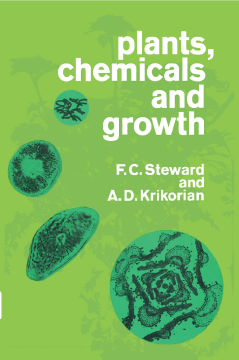
Additional Information
Book Details
Abstract
Plants, Chemicals and Growth focuses on chemicals that regulate the growth and development of plants. It explores the problems of growth and growth regulation by looking at the roles of chemical substances, natural and synthetic, which affect the behavior of the cells of flowering plants. It also describes the variety of responses triggered by such chemicals, which include herbicides, those that stimulate the rooting of cuttings or cause leaf or fruit abscission, and those associated with fruit setting and artificial parthenocarpy.
Comprised of 10 chapters, this volume begins with an overview of examples of chemical regulators and the biological responses they induce in plants, from tropism and chemotropism to nastic responses; rhythmic phenomena in growth and development; initiation of lateral organs and problems of phyllotaxy; periodicities in growth; and effects on the balance between vegetative growth, flowering, and fruiting. It discusses the totipotency and exogenous regulation of cells, history and modern concepts of plant growth regulators, the ways chemicals induce growth in quiescent cells, and growth-regulating effects in free cell systems. The reader is also introduced to biologically active compounds, such as indolyl and triazine compounds; how plant-regulating substances work; concepts and interpretations of plant growth regulation; and problems and prospects of chemical regulation of plant growth and development.
This book will be of interest to teachers, biology students, agriculturalists, and researchers.
